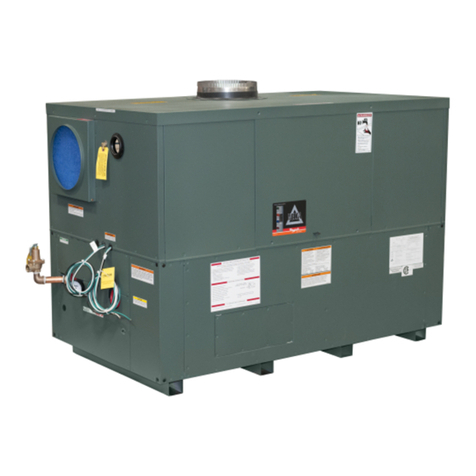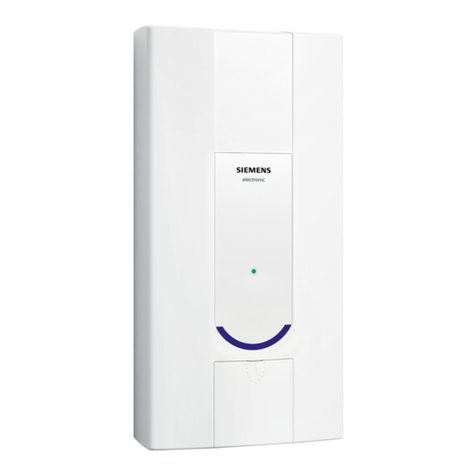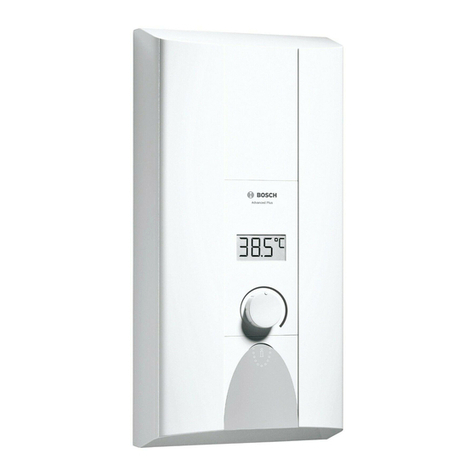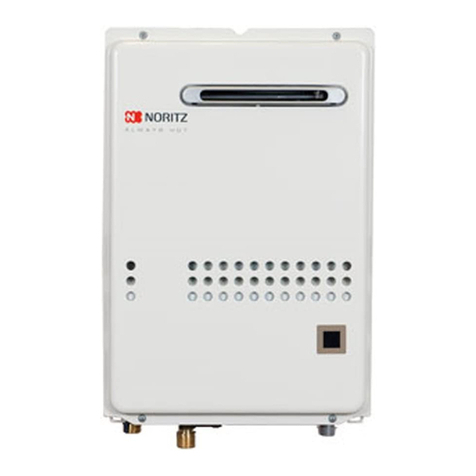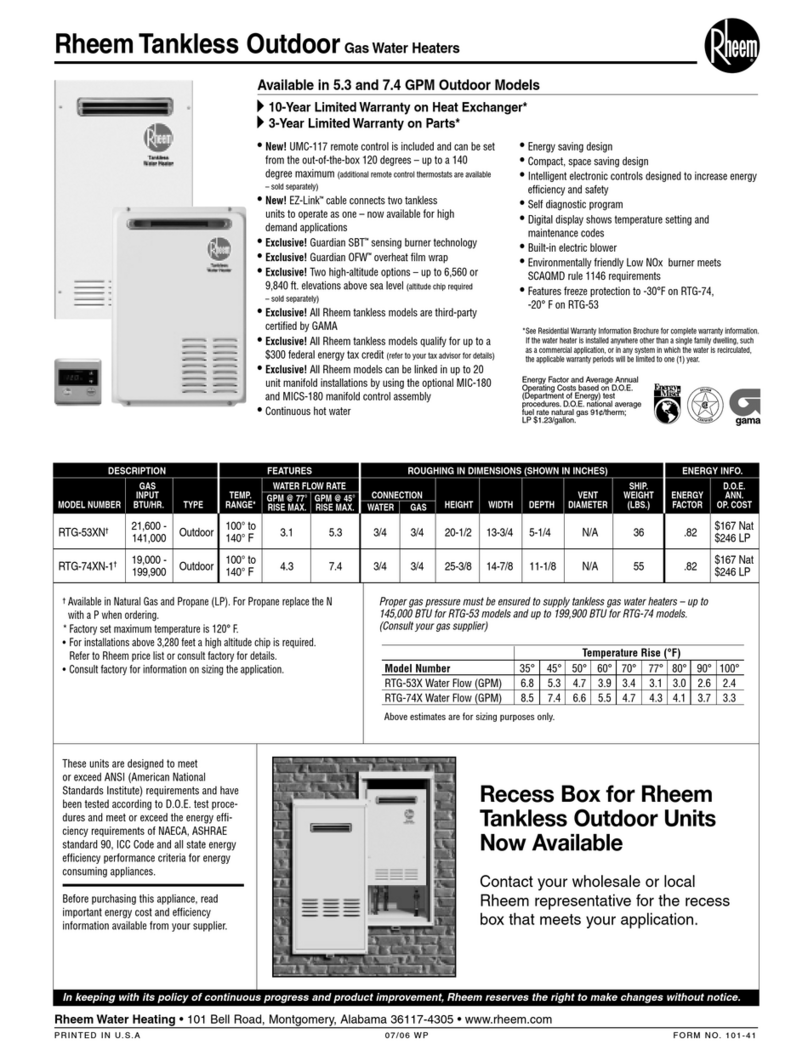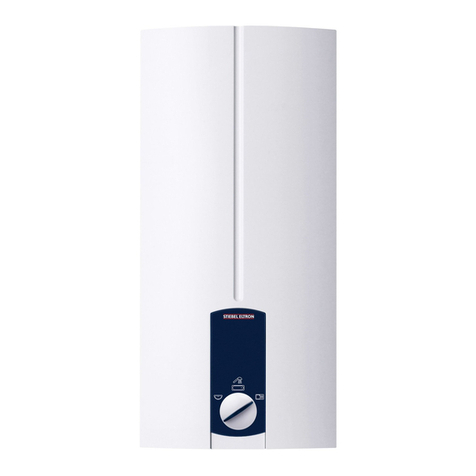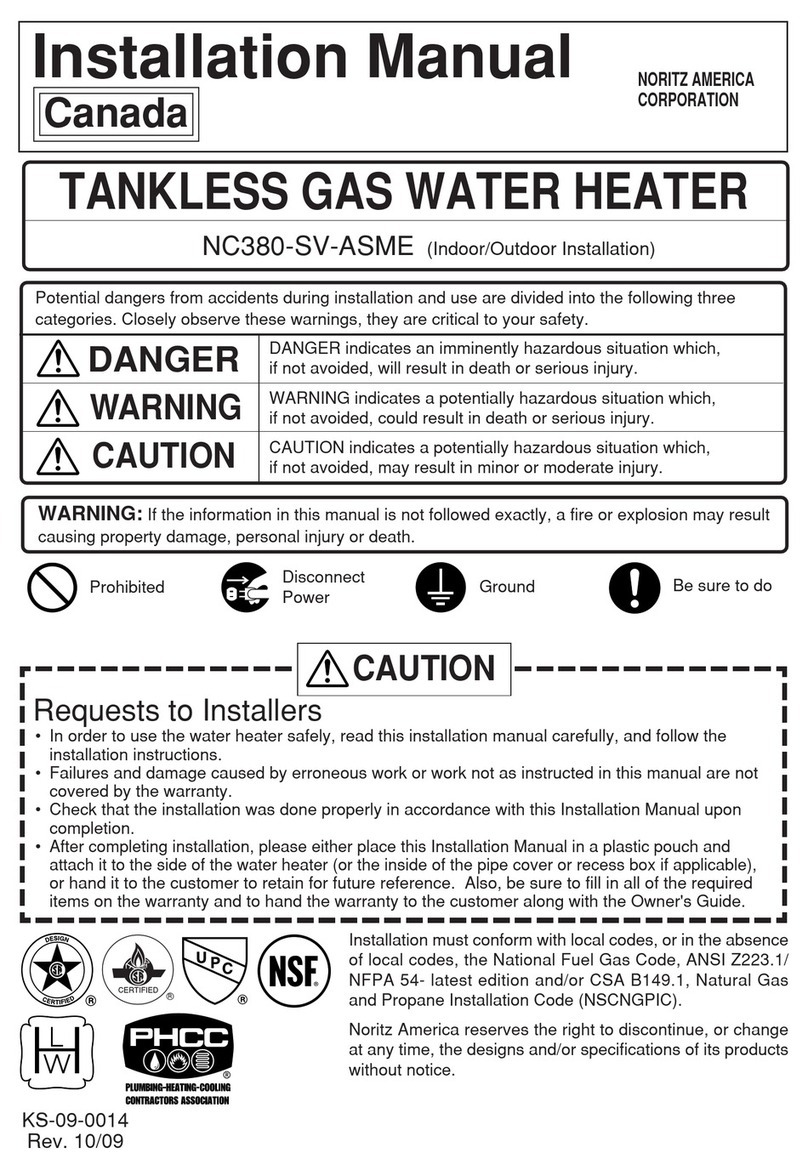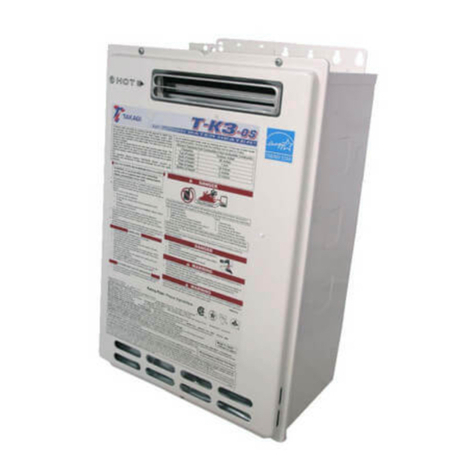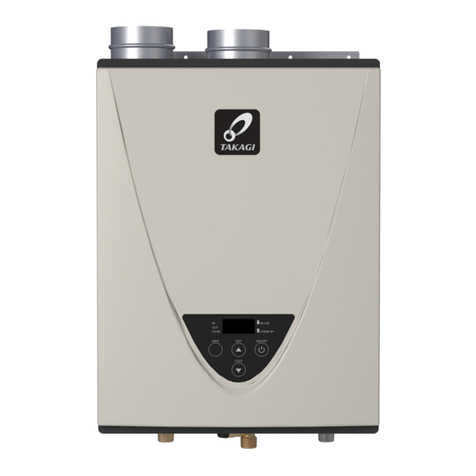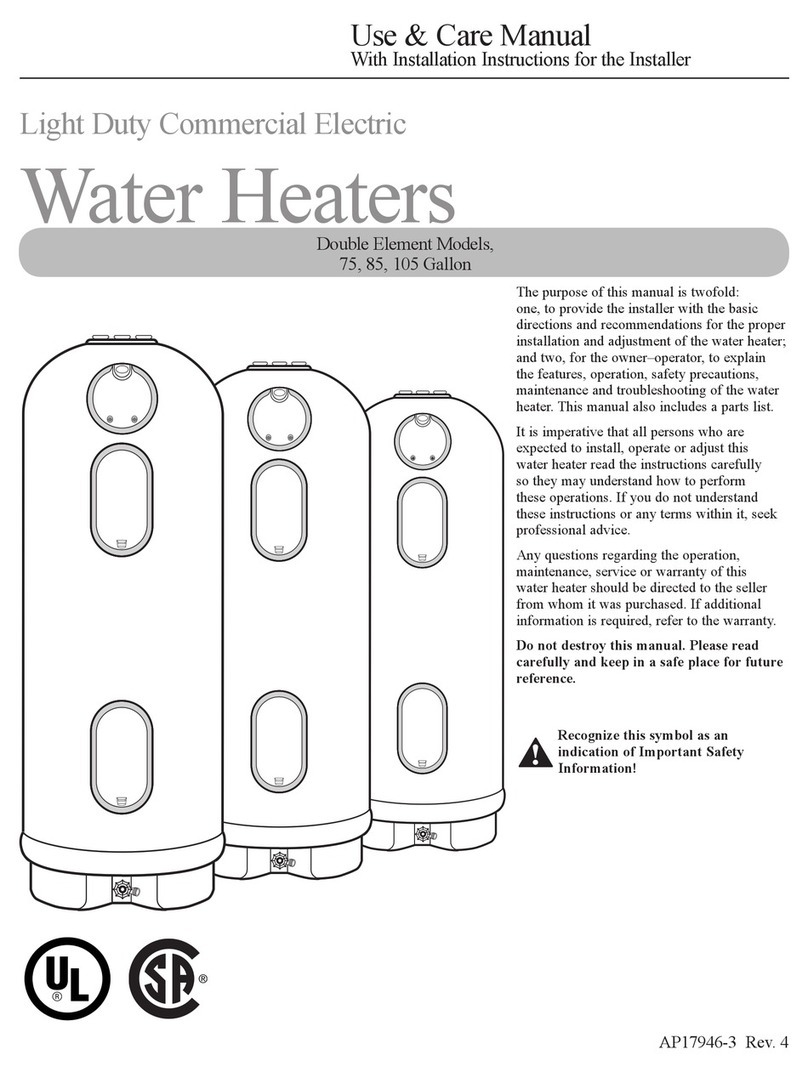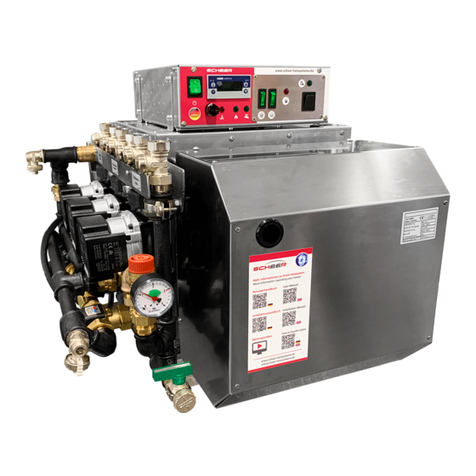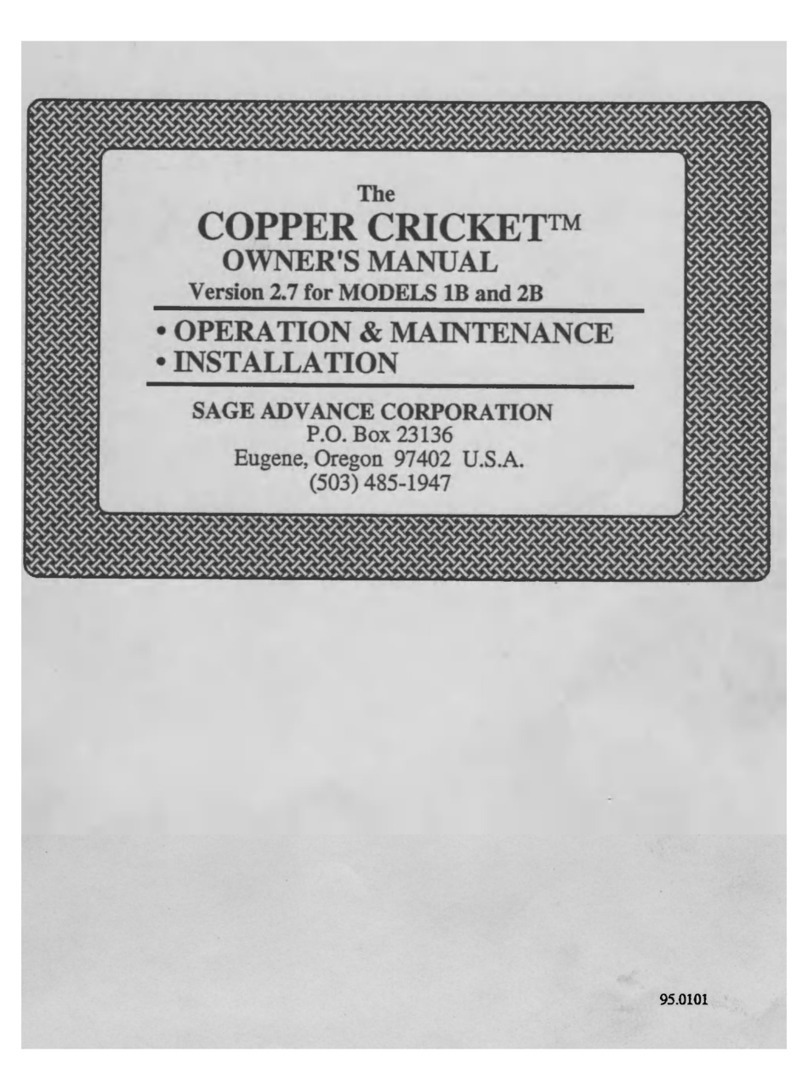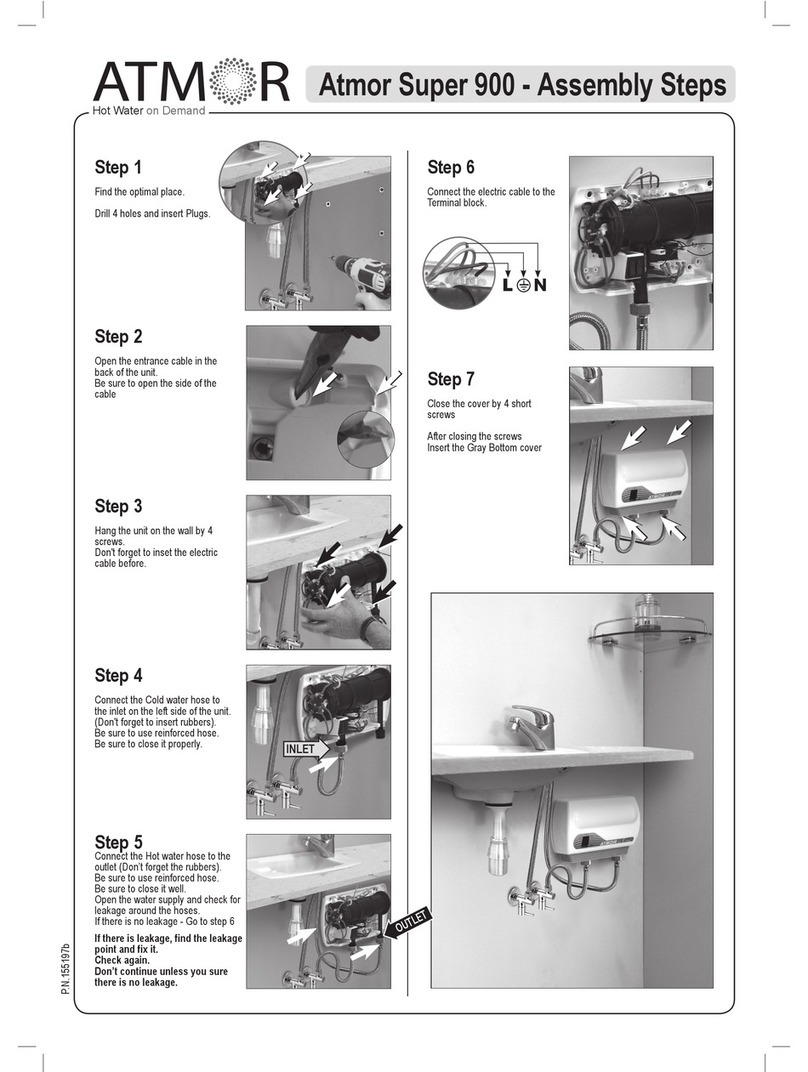
INSTALLATION:
-
Check that the appliance is suitable for the type of gas supplied.
-
CONNECTION MUST BE PROVIDED.
- A clearance of at least 1000mm must be available in front of the appliance to
WATER CONNECTION
Connection to the water system must be carried out by using pipes with the
same Ø as that shown in the table. Connect to the water inlet pipe, marked on
the appliance with a blue ring, the water safety unit (not supplied), which must
comply with standard EN89 paragraph 5.5, and must consist of:
- a shutoff valve,
- a check valve,
- a check valve monitoring device,
- a safety valve,
- a draining device.
If the mains pressure exceeds 6 bar, a pressure relief valve must be installed as
far away from the appliance as possible. A shutoff valve must also be installed
on the mains inlet pipe to enable any maintenance operations on the appliance
to be carried out.
The pipes must then be flushed with water to remove any debris, which could
damage the system.
Connect the appliance pipes to the water system pipes (the water inlets and
outlets on the appliance are identified by blue and red rings respectively).
During the appliance normal operation, especially during the heating stage, the
safety valve will drip a little to release pressure from the system, if required. It
is therefore recommended to connect this valve to an open drain and to install
downstream of the safety valve an expansion vessel for food use with a capacity
no lower than 4% of the total capacity of the appliance.
DRAIN
During installation, fit a drain valve. To drain the water heater, proceed a follows.
- Close the shutoff valve located upstream of the appliance.
- Open the water taps downstream of the water heater.
- Open the drain valve.
- Full drainage of the appliance is carried out by siphoning.
- Connect a hose to the drain valve.
RECIRCULATION
For water recirculation, connect the circuit to allow recirculation to the fitting (fig.1)
FILLING UP
The appliance must work with the tank full and at the operating pressure; before
operating the appliance, the tank must therefore be filled up by following the
instructions below:
- after connecting the appliance to the water system, open the cold water supply
valve and a hot water tap (for the bath, bidet, sink etc).
Wait until a continuous flow of water comes out of the tap.
When this happens, the water heater is full and the water tap can be closed,
whilst the water supply valve must be left open.
ELECTRICAL CONNECTION
Connect the appliance to a 200V, single phase, earthed mains power supply.
In the proximity of the appliance, fit a two-pole main switch to stop appliance
operation if necessary. Connect the appliance power cable, making sure CEI
electrical standards are complied with.
IMPORTANT: When connecting the power cable to the mains power supply,
observe the correct polarity (live-neutral). In case of inverted polarities or
live-live power supply, the appliance cannot work.
THE MANUFACTURER CANNOT BE HELD RESPONSIBLE FOR ANY DAMAGES
CAUSED BY THE ELECTRICAL SYSTEM BEING UNEARTHED.
ROOM VENTILATION
FLUE GAS VENTING
Installer Section
Installation Instructions
ease burner installation, adjustment and inspection operations. A clearance
of 1300mm must also be provided above the appliance to clean the flue gas
venting pipes, and of 500mm at the back and at the side of the appliance to
allow access to the internal cleaning holes.
These appliances have been designed to be floor mounted. A DRAINING
The appliance must be installed in compliance with all local relevant
applicable standards esta-blished by standards, which must be referred
to for issues which are not contemplated in this manual. This model of
water heater has been designed to be fixed mounted to the floor. If the
floor is made of wood or of a synthetic material, the water heater must
be positioned on a fire retardant base. If the appliance is to be installed in
an enclosed room without windows, adequate, fresh ventilation must be
provided. An inadequate ventilation can cause fire, explosion or
suffocation. Refer to national or local legislation.
The openings must be made in such a way as to avoid obstructions both from
inside and outside of the wall. Grilles, wired mesh etc. may be used to protect the
openings, without reducing the free net section mentioned above. These openings
must be positioned as close as possible to the ground and they must not interfere
with the flue gas vents
.
Warning: this appliance can only be used inside permanently ventilated
rooms,more specifically, the room must be ventilated with the quantity of air
required by all appliances installed in the room.The air must enter through
permanent openings made on the outside walls of the room to be ventilated.
These openings must have a net free section of at least 6cm² for each kW
installed on the appliance, with a minimum of 100cm²
This appliance is a B23 type appliance and is therefore fitted with a flue gas vent,
which must be directly connected to a chimney or a flue of established efficiency,
with a pipe section at least 50cm long. Only if these devices are not available the
appliance may be directly connected outdoors to vent the combustion products,
as long as the requirements established are complied with. It is also advisable
to read the text of this standard also for the purpose of viewing possible
solutions for making a venting pipe, which are shown in details. The flue gas
venting pipe must have the diameter shown in the table and must be resistant
to acid corrosion caused by condensation. For the oil-fired version, this
pipe must be made of stainless steel. For all versions, the
maximum length of the venting pipe must not exceed 8 metres.
Electrical anode protection
Certain areas of the country have particularly soft water and
therefore poor conductivity of the water with less than 200
micro-siemens per centimetre, such as Cornwall, Scotland and
Devon for example. In these areas of soft water, the magnesium
sacrificial anodes may not suffice in providing adequate protection
against corrosion of the water heater. In these geographical areas,
or other areas with particularly soft water, we insist that you use our
electrical anode protection system, as it is more effective at
providing protection in these circumstances. It is also to be noted
that a constant and uninterrupted power supply is required to these
anodes to ensure the full protection of the water heater.
Our oil-fired storage water heaters are all fitted with removable
magnesium sacrificial anodes as standard which ensuring excellent
protection against corrosion of the water heater. Clearance is
required above the water heater for maintenance and replacement
of the magnesium sacrificial anodes. Should you have insufficient
clearance above the water heater that will prevent anode
replacement using the standard magnesium anodes, then electrical
anode protection may be fitted, instead of the magnesium anodes
Sacrificial anode protection






